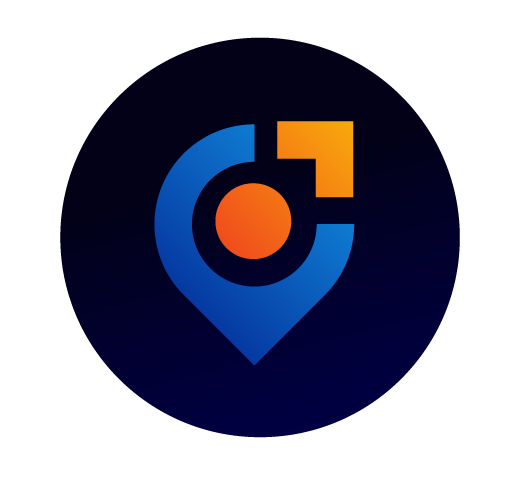Professional success rarely happens by accident. Instead, careers thrive on curiosity and intentional learning. Achieving real job market value requires more than just checking tasks off a list.
Companies reward employees who develop new abilities and adapt quickly. The ability to embrace continuous learning separates those who stagnate from those who advance — regardless of shifting trends.
If you’re ready to boost your value and feel empowered at work, this article offers proven ways to make continuous learning a practical habit with visible benefits.
Pinpoint Skills That Employers Are Really Seeking
To make every minute of continuous learning count, focus your efforts on what makes a difference in job searches and promotions.
Start by observing industry postings, manager feedback, and evolving project needs to reveal precisely where your skills could outpace the crowd.
Dissecting Real Job Descriptions for Clarity
Grab three job ads for your target role. Underline recurring skills, tools, or credentials. Notice where continuous learning would help you check those boxes, not just your resume.
For example, if you spot “data analysis” in each ad, enroll in a short online analytics tutorial. Apply the lessons to current workplace data so the learning sticks.
When you notice your manager mentioning a software skill in a team meeting, jot it down. Later, research a free resource that builds this skill fast and follow up with your manager.
Direct Conversations: What Colleagues Value
Pair up with a peer who recently earned a promotion. Ask exactly which new skills they demonstrated. Listen especially for process tweaks or certifications that impressed leadership.
Record the language your manager or team lead uses during project reviews. Terms like “reliable troubleshooting” or “creative documentation” hint at soft skills that training could strengthen.
Incorporate feedback loops: every two months, meet a mentor to review your roadmap. Adjust your continuous learning agenda based on new priorities discussed in these meetings.
| Desired Skill | Where to Learn | Time Investment | Takeaway |
|---|---|---|---|
| Data Visualization | MOOCs, YouTube | 8-20 hours | Build a chart, use it in your next report for instant impact |
| Remote Collaboration | Webinars, LinkedIn | 2-4 hours | Try out a new platform with your team on a pilot task |
| Process Automation | Vendor tutorials | 12-15 hours | Automate a weekly admin task and document savings |
| Client Communication | Peer coaching sessions | Ongoing | Apply a new script during your next client call |
| Basic Coding | Interactive sites | 10-25 hours | Write a simple script that improves workflow efficiency |
Set a Reliable System to Keep Learning on Track
You’ll see progress and avoid burnout by making continuous learning a repeatable part of your schedule—not a resolution you forget.
Instead of vague plans, create actionable checkpoints and use job-related triggers to decide what to focus on next for career momentum.
Break Down Learning Goals for Real Progress
Divide a big target like “become good at public speaking” into smaller steps: script a two-minute update, film yourself, then practice with a trusted colleague.
Each step has a clear finish line, making you less likely to procrastinate and more likely to earn positive feedback that reinforces steady improvement.
- Pick a skill linked to your current project. This ensures immediate usefulness and faster learning through application.
- Set a recurring 20-minute calendar block for practice or reading. Treat it as you would an important meeting with your boss.
- Share your progress with someone at work. Accountability keeps you consistent and lets others see your commitment to growth.
- Summarize new knowledge after every learning session. Create one slide or paragraph; explaining forces deeper retention and uncovers gaps.
- Reward yourself after finishing a milestone. Celebrate small wins, like sharing your new skill in a team meeting or streamlining a process.
Following this structure makes each learning moment feel meaningful while strengthening your position in the job market over time.
Connect Every Lesson Back to Your Workday
If you learn about a new spreadsheet formula, use it in the week’s expense report. Immediate practice makes continuous learning stick and shows direct job market relevance.
Try a new way of organizing email folders after reading a productivity article. Notice any time saved or mistakes avoided—then share those results during check-ins.
- Pair study with workplace habits. Listen to a short tutorial while commuting, then recap the idea in your next meeting summary.
- Choose peer-reviewed certifications. These are highly valued by employers and can be highlighted in your annual review.
- Experiment with new skills on low-risk tasks first. This lets you correct mistakes privately before applying them to critical projects.
- Request constructive feedback from a colleague. Ask for one suggestion you can use immediately to sharpen your new skill.
- Track learning outcomes in a notebook or app. Reflect on what worked, why, and what you’ll change next session.
Adapting what you learn to the realities of your job locks in skills for both short-term performance and long-term advancement.
Build Habits That Make Continuous Learning Automatic
Embedding micro-learning moments in your routine increases the odds you’ll stick with continuous learning even when work gets busy.
Use Every Opportunity to Practice Skills Consistently
Instead of waiting for big project launches, find small daily chances to apply what you’re learning. This can mean solving a single workflow snag or rewriting an email intro.
Analogies help: treat micro-learning like brushing your teeth—routine, quick, and essential. You wouldn’t skip tooth brushing, so approach learning the same consistent way.
Create a “learning sprint” by dedicating the first ten minutes of each workday to a new tip or resource. Over weeks, this momentum compounds and keeps skill growth continuous.
Review and Adapt: Make Progress Visible Each Month
Set a calendar reminder to review your progress every four weeks. List new skills you’ve gained and rate your confidence using each on a scale from one to ten.
If your confidence score is low for any item, book a short session to revisit those concepts or request a quick project assignment that forces you to apply the skill.
This loop creates a habit of reflection and recalibration, making continuous learning a living part of your workplace identity instead of a forgotten resolution.
Turn Learning into Your Career Advantage
Consistent skill development tailored to real job demands elevates your career trajectory and shows employers that you never settle for less than your best performance.
Continuous learning is both a personal investment and an industry expectation. Bringing curiosity to your workday ensures long-term relevance as job roles and technologies shift.
Pursue growth with openness and actionable steps, and you’ll inspire coworkers, stay marketable, and—most importantly—find renewed satisfaction in every professional challenge you tackle.



